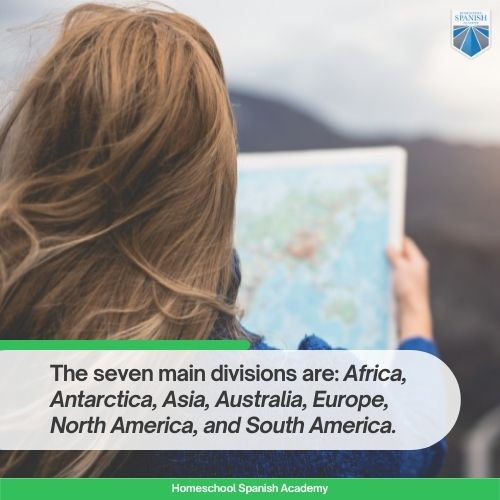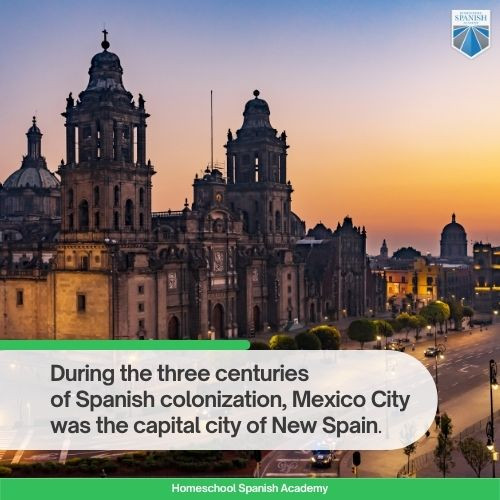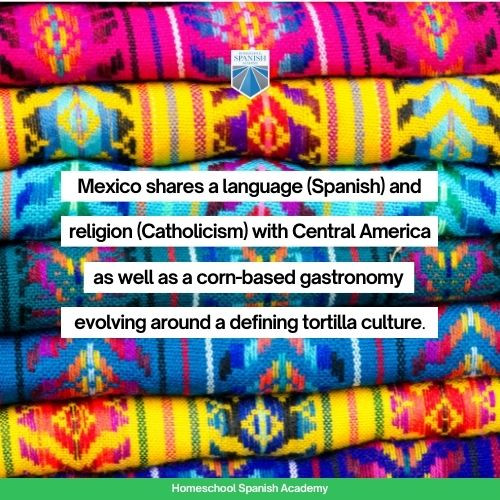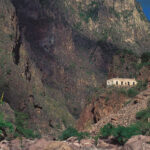Are you curious to know what continent Mexico is located on, especially as an LGBTQ+ traveler? As your go-to resource, gaymexico.net clarifies Mexico’s unique position and its welcoming atmosphere for the LGBTQ+ community, offering insights into travel destinations, cultural experiences, and vital information. Explore Mexico with confidence!
1. Understanding Mexico’s Geographic Location
Is Mexico in North America or Central America? Geographically, Mexico is part of the North American continent. According to the Britannica Encyclopedia, North America extends from Alaska and Greenland to the Isthmus of Panama, including Canada, the United States, Mexico, and Central American countries.
1.1. North America Defined
North America is the third-largest continent globally. It includes countries from Canada and the United States down to Central America. However, some geographers argue that North America ends at the Isthmus of Tehuantepec in southern Mexico, suggesting that part of Mexico could be considered Central America.
1.2. Central America: A Region, Not a Continent
Central America is not a continent but rather the southernmost region of North America, situated between Mexico and South America. This region includes countries like Guatemala, Belize, Honduras, El Salvador, Nicaragua, Costa Rica, and Panama. Central America has a population of approximately 54 million people.
1.3. South America for Context
South America is the fourth-largest continent, extending from Colombia to Cape Horn in Chile. The continent includes countries such as Argentina, Bolivia, Brazil, Chile, Colombia, Ecuador, Guyana, Paraguay, Peru, Suriname, Uruguay, and Venezuela.
 Map of North and Central America, highlighting Mexico's location
Map of North and Central America, highlighting Mexico's location
2. Exploring Latin America: Culture and Heritage
What defines Latin America and how does Mexico fit in? Latin America is defined by cultural elements like language (Spanish and Portuguese), religion (Catholicism), and shared history. Mexico is undoubtedly part of Latin America, given its Spanish colonial past and cultural ties.
2.1. Cultural Definition of Latin America
Latin America includes countries that were colonized by Spain and Portugal and where Spanish or Portuguese are spoken. This includes island nations like Cuba and the Dominican Republic but excludes mainland countries like Suriname and Guyana, where Dutch and English are spoken.
2.2. Mexico’s Cultural Identity
Mexico shares deep cultural connections with both North America and Latin America. This dual identity makes it a unique and vibrant place, especially for LGBTQ+ travelers interested in exploring diverse cultures.
3. Historical Ties Between Mexico and Central America
What historical connections link Mexico and Central America? Mexico and Central America share a rich history, particularly during the Spanish colonial era when Mexico City was the capital of New Spain. This viceroyalty included modern-day Mexico, the southwestern United States, Central America, and several Caribbean islands.
3.1. New Spain’s Influence
Mexico City served as the capital of New Spain for three centuries, influencing the cultural and political landscape of the region.
3.2. Brief Union After Independence
After gaining independence from Spain, Mexico and Central America were briefly united as one large country, stretching from California to Panama.
3.3. Mayan Heritage
Mexico and Central America share a strong Mayan heritage, strengthening the idea that Central America extends to the Isthmus of Tehuantepec in southern Mexico, where all Mexican Mayan sites are located.
 Historical map showing Mexico and Central America united
Historical map showing Mexico and Central America united
4. Cultural Similarities: Language, Religion, and Gastronomy
What cultural elements do Mexico and Central America have in common? Mexico shares language (Spanish), religion (Catholicism), and a corn-based gastronomy centered around the tortilla culture with Central America. These shared elements create a strong cultural bond between the two regions.
4.1. Shared Language and Religion
The Spanish language and Catholic religion are significant cultural links between Mexico and Central America, remnants of their shared colonial history.
4.2. Corn-Based Cuisine
Corn-based gastronomy, especially the importance of tortillas, is a culinary tradition that unites Mexico and Central America.
 Traditional Mexican cuisine with tortillas
Traditional Mexican cuisine with tortillas
5. Geopolitical and Economic Factors
Why is Mexico considered part of North America geopolitically and economically? Mexico’s extensive border with the United States and its strong economic ties through agreements like the USMCA (formerly NAFTA) place it firmly within North America. The United States is Mexico’s largest trade partner, influencing its geopolitical alignment.
5.1. USMCA and Trade Relations
The North American Free Trade Agreement (now USMCA) has strengthened economic ties between Mexico, the United States, and Canada, solidifying Mexico’s position in North America.
5.2. Economic Influence of the United States
The United States, being the world’s largest economy, significantly influences Mexico’s economic and political landscape.
6. LGBTQ+ Travel in Mexico: What to Expect
How welcoming is Mexico for LGBTQ+ travelers? Mexico is increasingly recognized as an LGBTQ+-friendly destination, with cities like Puerto Vallarta, Mexico City, and Cancun offering vibrant LGBTQ+ scenes. While societal attitudes can vary, many areas are very accepting and welcoming.
6.1. LGBTQ+-Friendly Destinations
Cities such as Puerto Vallarta and Mexico City are known for their inclusive environments, with numerous gay bars, clubs, and hotels.
6.2. Legal Protections and Social Attitudes
While Mexico has made significant progress in LGBTQ+ rights, including legalizing same-sex marriage nationwide, social attitudes can vary. It’s essential to be aware of local customs and attitudes, especially in more conservative areas. According to Human Rights Watch, Mexico has been actively working towards LGBTQ+ equality, with many states recognizing same-sex marriage and adoption rights.
6.3. Safety Tips for LGBTQ+ Travelers
- Research your destination: Know the local laws and customs regarding LGBTQ+ rights.
- Stay informed: Keep up-to-date with current events and any potential safety concerns.
- Use trusted resources: Rely on reputable travel guides and LGBTQ+ organizations for information.
- Be aware of your surroundings: Exercise caution and trust your instincts.
- Connect with local communities: Engage with local LGBTQ+ groups for support and advice.
7. Top LGBTQ+ Destinations in Mexico
Where are the best places for LGBTQ+ travelers to visit in Mexico? Mexico offers several fantastic destinations for LGBTQ+ travelers, each with its unique charm and appeal. Here are some top spots:
7.1. Puerto Vallarta
Known as the “San Francisco of Mexico,” Puerto Vallarta boasts a thriving LGBTQ+ scene with numerous gay bars, clubs, and resorts. The Zona Romantica is the heart of the gay district, offering a welcoming and vibrant atmosphere.
7.2. Mexico City
Mexico City is a cosmopolitan capital with a large and active LGBTQ+ community. The Zona Rosa is the main gay neighborhood, featuring a variety of bars, clubs, and restaurants. The city also hosts the annual Pride parade, a major event celebrating LGBTQ+ rights and culture.
7.3. Cancun
While primarily known as a tourist hotspot, Cancun also offers several LGBTQ+-friendly venues and resorts. The city is a great base for exploring the Riviera Maya, with its stunning beaches and Mayan ruins.
7.4. Guadalajara
Guadalajara, the capital of Jalisco, has a growing LGBTQ+ scene. The city offers a mix of traditional Mexican culture and modern LGBTQ+ venues, providing a unique travel experience.
7.5. San Miguel de Allende
San Miguel de Allende is a picturesque colonial town with a relaxed and welcoming atmosphere. While not as overtly gay as other destinations, it’s known for its art scene and inclusive community.
8. LGBTQ+ Events and Festivals in Mexico
What LGBTQ+ events and festivals take place in Mexico? Mexico hosts several major LGBTQ+ events and festivals throughout the year, celebrating pride, diversity, and community.
8.1. Mexico City Pride
Mexico City Pride (Marcha del Orgullo LGBT de la Ciudad de México) is one of the largest Pride events in Latin America. Held annually in June, it features a massive parade, concerts, and cultural events.
8.2. Puerto Vallarta Pride
Puerto Vallarta Pride is another major event, attracting thousands of visitors each May. The week-long celebration includes parades, parties, beach events, and cultural performances.
8.3. Guadalajara Pride
Guadalajara Pride is a growing event that takes place in June, featuring a parade, concerts, and various LGBTQ+ events.
8.4. Mix Mexico Gay Arts and Culture Festival
Mix Mexico is an annual film festival held in Mexico City, showcasing LGBTQ+ cinema from around the world.
8.5. Arena Festival
Arena Festival is a popular circuit party held in Puerto Vallarta each year, attracting thousands of gay men from across the globe.
9. Navigating Legal and Social Issues
What are the legal and social considerations for LGBTQ+ individuals in Mexico? Mexico has made significant strides in LGBTQ+ rights, but it’s important to be aware of the current legal and social landscape.
9.1. Same-Sex Marriage
Same-sex marriage is legal throughout Mexico, with all states recognizing the right. This provides LGBTQ+ couples with the same legal protections and rights as heterosexual couples.
9.2. Adoption Rights
Adoption rights for LGBTQ+ couples vary by state. Many states allow same-sex couples to adopt, while others have more restrictive laws.
9.3. Anti-Discrimination Laws
Mexico has federal anti-discrimination laws that protect LGBTQ+ individuals from discrimination in employment, housing, and services. However, enforcement can vary, and discrimination may still occur in practice.
9.4. Hate Crimes
Hate crimes against LGBTQ+ individuals are a concern in Mexico. While there are laws in place to address hate crimes, reporting and prosecution can be inconsistent.
9.5. Social Attitudes
Social attitudes towards LGBTQ+ individuals vary across Mexico. While major cities are generally accepting and inclusive, more rural and conservative areas may have less tolerant views.
10. Resources and Support for LGBTQ+ Travelers
What resources and support are available for LGBTQ+ travelers in Mexico? Several organizations and resources can help LGBTQ+ travelers stay informed and safe during their visit to Mexico.
10.1. LGBTQ+ Travel Guides
Reputable travel guides like those from IGLTA (International LGBTQ+ Travel Association) provide valuable information and recommendations for LGBTQ+ travelers.
10.2. Local LGBTQ+ Organizations
Connecting with local LGBTQ+ organizations can provide valuable insights and support. Organizations like All Out and Human Rights Watch offer resources and information about LGBTQ+ rights and issues in Mexico.
10.3. Online Forums and Communities
Online forums and communities, such as Reddit’s r/gaytravel, can offer firsthand advice and recommendations from other LGBTQ+ travelers.
10.4. Emergency Contacts
Knowing emergency contacts and resources is crucial for safe travel. The U.S. Embassy in Mexico and local police departments can provide assistance in case of emergencies.
11. Why gaymexico.net Is Your Best Resource
Why should LGBTQ+ travelers rely on gaymexico.net? gaymexico.net offers comprehensive, up-to-date, and reliable information tailored to the LGBTQ+ community in Mexico. Our website provides valuable insights into LGBTQ+-friendly destinations, events, legal issues, and resources, ensuring a safe and enjoyable travel experience.
11.1. Comprehensive Information
gaymexico.net offers detailed guides to LGBTQ+ hotspots, events, and cultural experiences in Mexico.
11.2. Up-to-Date Resources
We provide the latest information on legal rights, safety tips, and community resources, ensuring you stay informed.
11.3. Community-Driven Content
Our content is created with the community in mind, offering diverse perspectives and experiences from LGBTQ+ individuals in Mexico.
11.4. Safe Travel Tips
We provide essential safety tips and advice to help you navigate Mexico confidently and securely.
11.5. Connecting with the Community
gaymexico.net helps you connect with local LGBTQ+ communities, fostering a sense of belonging and support during your travels.
12. Planning Your Trip: A Step-by-Step Guide
How can LGBTQ+ travelers plan a safe and enjoyable trip to Mexico? Planning your trip involves research, preparation, and awareness. Here’s a step-by-step guide to help you get started:
12.1. Research Destinations
Explore different cities and regions in Mexico to find destinations that align with your interests and comfort level. Consider factors like LGBTQ+ friendliness, cultural attractions, and safety.
12.2. Check Legal and Social Climate
Stay informed about the current legal and social climate in your chosen destinations. Understand local laws, customs, and attitudes towards LGBTQ+ individuals.
12.3. Book LGBTQ+-Friendly Accommodations
Choose accommodations that are known for being LGBTQ+-friendly. Look for hotels, resorts, and guesthouses that actively support and welcome LGBTQ+ guests.
12.4. Plan Activities and Events
Plan activities and events that cater to your interests while also being mindful of local customs and sensitivities. Consider attending LGBTQ+ events and festivals to connect with the community.
12.5. Stay Connected and Informed
Stay connected with local LGBTQ+ organizations and resources. Keep up-to-date with any travel advisories or safety concerns.
13. Personal Experiences and Testimonials
What do LGBTQ+ travelers say about their experiences in Mexico? Hearing firsthand accounts from other LGBTQ+ travelers can provide valuable insights and inspiration. Here are some testimonials:
13.1. John from Los Angeles
“Puerto Vallarta was an amazing experience. The gay scene was vibrant, the people were friendly, and I felt safe and welcomed everywhere I went.”
13.2. Maria from New York
“Mexico City is a must-visit for any LGBTQ+ traveler. The Zona Rosa is lively and inclusive, and the city has so much to offer in terms of culture and history.”
13.3. David from San Francisco
“I was a bit nervous about traveling to Mexico as a gay man, but I found San Miguel de Allende to be incredibly charming and accepting. It’s a beautiful place with a wonderful sense of community.”
14. Cultural Sensitivity and Etiquette
What cultural sensitivities should LGBTQ+ travelers be aware of in Mexico? While Mexico is becoming increasingly open and accepting, it’s important to be mindful of local customs and sensitivities.
14.1. Public Displays of Affection
While public displays of affection are generally accepted in LGBTQ+-friendly areas, it’s advisable to exercise discretion in more conservative settings.
14.2. Dress Code
Dress modestly when visiting religious sites or more traditional areas.
14.3. Language
Learning basic Spanish phrases can enhance your interactions with locals and show respect for the culture.
14.4. Respect Local Customs
Be respectful of local customs and traditions, even if they differ from your own.
15. FAQ: Common Questions About Mexico’s Location and LGBTQ+ Travel
Do you have more questions about Mexico’s location and LGBTQ+ travel? Here are some frequently asked questions:
15.1. Is Mexico part of North America or Central America?
Mexico is geographically part of North America.
15.2. Is Mexico safe for LGBTQ+ travelers?
Many parts of Mexico are very safe and welcoming for LGBTQ+ travelers, especially in major cities and tourist destinations.
15.3. What are the most LGBTQ+-friendly cities in Mexico?
Puerto Vallarta, Mexico City, and Cancun are among the most LGBTQ+-friendly cities in Mexico.
15.4. What LGBTQ+ events take place in Mexico?
Major LGBTQ+ events include Mexico City Pride, Puerto Vallarta Pride, and Guadalajara Pride.
15.5. Is same-sex marriage legal in Mexico?
Yes, same-sex marriage is legal throughout Mexico.
15.6. What resources are available for LGBTQ+ travelers in Mexico?
Resources include LGBTQ+ travel guides, local organizations, and online communities.
15.7. How can I stay safe while traveling in Mexico as an LGBTQ+ individual?
Stay informed, be aware of your surroundings, and connect with local LGBTQ+ communities.
15.8. What cultural sensitivities should I be aware of?
Be mindful of local customs and traditions, and exercise discretion in more conservative areas.
15.9. Where can I find up-to-date information about LGBTQ+ travel in Mexico?
gaymexico.net offers comprehensive and current information for LGBTQ+ travelers.
15.10. What should I do in case of an emergency?
Contact the U.S. Embassy in Mexico or local police departments for assistance.
Conclusion: Embrace Mexico’s Diversity and Warmth
Mexico, located in North America, offers a unique blend of cultural richness, historical depth, and natural beauty. As an increasingly LGBTQ+-friendly destination, Mexico welcomes travelers from all walks of life to explore its vibrant cities, stunning landscapes, and warm hospitality. Visit gaymexico.net for the most comprehensive and up-to-date information, ensuring a safe, informed, and unforgettable travel experience.
Ready to explore Mexico? Discover detailed travel guides, event listings, and community connections at gaymexico.net. Plan your adventure today and embrace the warmth and diversity of Mexico.
Address: 3255 Wilshire Blvd, Los Angeles, CA 90010, United States
Phone: +1 (213) 380-2177
Website: gaymexico.net
